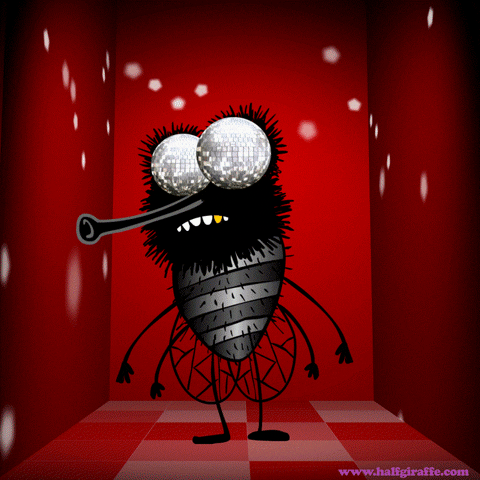Le brio swing, américain, céleste, musette, demi-swing, sec, ... Qu'est-ce que c'est?
Dans la large palette de sons que possède l'Accordéon, on trouve une sonorité typique issue d'un vibrato généré par deux voix medium accordées suivant des fréquences différentes.
Le brio correspond à la gestion de ce vibrato.
I- La partie technique:
Le vibrato est créé en juxtaposant deux sons de fréquences légèrement différentes.
Prenons en référence un LA medium d'une fréquence de 440 hertz soit 440 oscillations par secondes.
Juxtaposons un deuxième LA d'une fréquence de 442 hertz.
L'oreille humaine percevra alors 2 battements par seconde qui correspondent aux 2 décrochages (442 - 440 = 2) des fréquences.
Petite parenthèse: Jouons avec nos oreilles!
Ecoutez une mouche voler et essayez de déterminer approximativement le son qu'elle émet.
Si le bruit de son vol ressemble par exemple à un SOL grave, vous pouvez en déduire que la mouche réalise environ 196 battements d'aile par seconde.

Vous pouvez aussi réaliser cette expérience avec un moteur thermique (scooter, automobile, etc.). Il vous faudra alors, transposer les battements/seconde en tours/minute...
II- La partie historique:
Ce vibrato était déjà utilisé dans la période romantique par les orgues puis par les harmoniums. Ce registre était appelé "céleste".
L'Accordéon va rapidement adopter ce son vibrant dès le début de sa popularisation pour faire danser ou pour accompagner les chants.
L'accordéon du bal utilisera toujours ce son vibrant et chantant très apprécié.
Ce trémolo aux couleurs festives donnera également à l'accordéon une grande sensation de puissance sonore. Les microphones n'étaient pas encore d'actualité.
Après la première guerre mondiale, le Jazz venu des Etats Unis d'Amérique arrive en France. On l'appelait aussi le Swing.
Certains accordéonistes du bal musette furent attirés par ce nouveau genre musical et l'intégrèrent au répertoire existant.
Vers la fin des années 30' on pouvait entendre à Paris un nouveau style musical typiquement français, inspiré à la fois par le Musette et par le Swing ou le Jazz.
Les accordéonistes ayant adopté ce nouveau style firent modifier le son (brio) de leurs accordéons en lui enlevant le fort trémolo utilisé auparavant.
Un nouveau son d'accordéon était né. On l'appellera alors le son "moderne", "américain" ou bien "swing".
III- Les différentes nuances du brio:
Le brio est l'effet généré par l'écart de fréquences entre 2 voix medium.
Il évolue d'un écart de 0 à environ 9 hertz sur un LA medium.
Les accordéonistes ont toujours cherché à nommer chaque nuance de brio avec plus ou moins de précision.
Exercice difficile. Aussi difficile que de définir une nuance de couleur: bleu clair, bleu ciel, bleu pâle, bleu azur, bleu horizon, etc.
Le nouveau son apparu à la fin des années 30' était donc appelé "moderne" "américain" ou swing". Il correspondait à un brio très léger avec très peu d'écart entre les 2 voix: de 1 à 2,5 hertz sur le LA medium.
Avec le temps, les définitions se sont affinées. L'appellation "moderne" a disparu. On a attribué le nom de "swing" pour un brio très serré de 1hz à 1,5hz et le nom de "américain" pour un brio légèrement plus vibrant de 2hz à 2,5 ou 3hz.
L'ancien son traditionnel fut alors appelé "musette" pour un trémolo sur 3 voix (voir notre article sur le son musette) ou bien "céleste" pour un trémolo sur 2 voix. Chacun de ces 2 sons englobant de nombreuses nuances de brio allant de 4 à 9hz.
A la fin des années 70' l'accordéon diatonique fait son retour.
On lui enlève à son tour le fort trémolo qu'il avait conservé jusqu'alors pour adopter les nouveaux sons moins vibrants avec des brios allant de 0 à 2,5hz.
De nouveaux noms vont apparaître:"demi-swing" "sec" etc.
Le brio sec correspond en fait à l'absence de brio. Les 2 voix sont accordées exactement au même diapason. Aucun trémolo n'est perceptible sauf parfois un léger phasing.
Le brio "demi-swing" sera interprété de deux façons différentes:
1 - L'approche historique qui comprend le son "swing" comme une suppression du trémolo et donc le "demi-swing" en supprimerait un peu moins et serait un peu plus vibrant que le "swing".
Les définitions et appellations des différentes nuances de brio restent fluctuantes. Elles n'ont pas été normalisées.
Chaque nuance de brio peut aujourd'hui être nommée au demi-hertz près...parfois différemment d'un atelier à l'autre.
IV- La précision du brio:
Il est possible de réaliser un brio avec une grande précision allant jusqu'au 1/2 hertz si l'instrument le permet.
Voici les grandes catégories de brios:
- L'accordage "sec" où les 2 voix sont accordées parfaitement justes
- Les brios peu vibrants "swing sec" "swing serré" "demi-swing atténué" "demi-swing" "swing" "swing plus" "américain" "américain plus" etc. qui vont de 0,5hz à 2,5hz avec toutes les nuances intermédiaires.
- Les brios moyens dits "italiens" de 3hz à 4hz
- Les brios "célestes" vibrants, de 4,5hz à 9hz, de "céleste léger" à "céleste +++"
- On parle aussi aujourd'hui de brio "musette" qui correspond en fait au "céleste" très vibrant. L'appellation "musette" était réservée auparavant aux sons générés par 3 voix medium.
A savoir:
- Le brio, au delà de son aspect technique, est d'abord un ressenti.
Un même réglage du brio donnera des couleurs de sons différentes selon les instruments utilisés. Au delà du brio, chaque accordéon possède un timbre personnel.
- Les facteurs d'accordéons préfèrent utiliser un langage plus technique et précis. Ils s'expriment en cents ou centièmes de demi-tons (tempérament égal).
Un cent = environ 0,26 hertz au niveau du LA medium.
Un brio à 2hz donnera environ +8 cents.
Nos conseils pour choisir son brio:
Les différents noms et qualificatifs attribués au brio pour décrire sa couleur sonore sont la première approche pour définir un son plus ou moins vibrant.
Pour choisir le brio qui vous plaira, parlez-en à votre accordeur ou facteur d'accordéons et n'hésitez pas à citer des exemples d'artistes ou extraits sonores qui vous plaisent.
Votre accordeur saura le définir avec précision pour un rendu au plus près de vos attentes.
